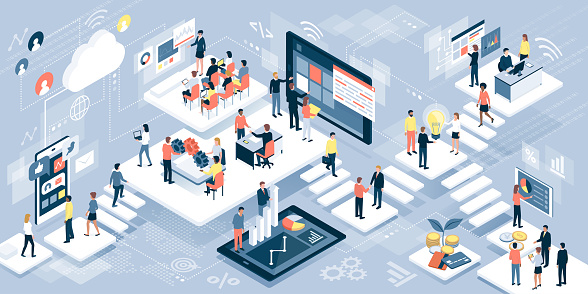There were fears of job losses and machines taking over, but what’s happening in the financial services industry is anything but that. The finance sector is claiming greater benefits with the assistance of Artificial Intelligence. Due to the unscripted power of AI, the creation of the New-Collar worker has emerged. The potential of AI evolving the next avatar of the financial services industry is more than evident.

What 4 Areas Has AI Started Transforming the Financial Sector?
Regardless of where you sit on the AI argument, it’s evident; Artificial Intelligence has made an enormous impact around the world. There will be no turning back. Big data, customer satisfaction, and more convenience are no longer on the horizon. All are here to stay. Organizations and institutions will be required to collaborate and foster a favorable environment if they want to be successful.
Currently, the financial industry has extended an olive branch of acceptance, wanting more interaction with this technology. The four areas AI has made the biggest impression with banks, lending institutions, and creditors are listed below.
1. Risk Assessment:
The basics of AI is gathering and learning from past data. In the Financial Services sector, where records and bookkeeping are paramount to any business is how AI will succeed. Credit cards, for example, use credit scores. Those scores are gathered and used to determine who is and isn’t eligible for a credit card.
Now, let’s add that person’s number of loans currently active, what their loan payment habits are, and the current number of existing credit cards in their possession. All of that personal information gathered together, gets used to customize the interest rate on a credit card, and based on that collected data the financial institution may or may not offer their card.
When you have a system, that can access, scan, and sort through tens of thousands of personal and business financial records instantly; the results will provide AI with an accurate solution, and make or not make a recommendation for a loan or credit, all based on what it has gathered and learned. That reduces any risk the lending institution has to assume.
2. Fraud Detection And Fraud Management:
Every business does their best to reduce their risks that may surround them. Financial institutions are no different. The loan a bank extends to you is someone else’s money, which is why financial institutions and banks view fraud with extreme prejudice and scrutiny. And how artificial intelligence gets used for fraud detection, identification, and security.
From what AI has learned from past spending habits it can point out odd transaction behaviors. For instance, when using a credit card in one country, but only a few hours early, the card got swiped in another country, thousands of miles away, on another continent.
Furthermore, there is a unique feature about AI when used for fraud detection. Due to not having any bias about learning, when AI raises a red flag on what’s considered a regular transaction and a human being corrects that, the system will learn from that experience and remember that behavior. From that point forward it begins to make more sophisticated decisions about what can be considered fraud on any particular account.
3. Financial Advisory Services:
Begin to look forward to more Robo-advisors. Robo-advisors or Robo-advisers are a class of financial adviser that provide financial advice or investment management online with moderate to minimal human intervention. They offer digital financial information based on mathematical rules or algorithms.
Besides these advisors, there is another interesting advisory field emerging known as bionic advisory. Along with calculations from machines, it will include human insight. That is where collaboration comes into play. AI is the component, and the human offers viewpoints, and together provide options and is more efficient. It becomes a balance between machine and human interaction with future financial decisions.
4. Trading:
Data scientists and computers determine future patterns in the market, and investment companies rely heavily on them. Their findings do affect investments and selling when predicting the future accurately. That is another area the financial industry is transforming with machine learning, because of their ability to gather and crunch massive amounts of data quickly.
These devices can be taught to observe patterns from past prediction data and forecast how these particular patterns might repeat in the future. Even with anomalies, AI machines can be programmed to study and find the anomaly triggers to assist with any future forecasting.
From what AI has learned it would then make portfolio suggestions, based on each person’s demand and the individual’s risk appetite. So if a person has a lower risk appetite, they would receive alerts when the market might fall, but then the high-risk appetite person can count on AI for decisions on when to buy, sell, or hold stock.
In Conclusion
Artificial Intelligence is transforming the financial industry now and not in the future. It’s transforming that sector through risk assessment, fraud detection, fraud management, financial advisory services, and trading. It helps companies with saving money on hiring humans and also avoiding human errors in this process. With AI still in its budding stages and it’s rapid learning speed, the finance sector will evolve quicker. As you continue to watch the industry, expect that the prospects are going to lead to smarter trading, minor losses and excellent customer experiences.
Did you find this article informative? If you liked this one, check out our other content we think you’ll find interesting.







